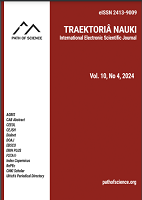Physicochemical and Bacteriological Analysis of Ebe River Water Used for Drinking in Amede Community, Eha-Amufu, Southeast Nigeria
Physicochemical and Bacteriological Analysis of Ebe River Water Used for Drinking in Amede Community, Eha-Amufu, Southeast Nigeria
Author(s): Ekene Samuel Odo, Chukwuemeka Vincent EzeSubject(s): Energy and Environmental Studies, Human Ecology, Environmental interactions
Published by: Altezoro, s. r. o. & Dialog
Keywords: Water; pollution; heavy metals; pathogens; Ebonyi River; coliform;
Summary/Abstract: Water is an essential natural resource in maintaining and sustaining life. Drinking water pollution is common in poor societies and seriously challenges public health. Polluted water can contain high levels of heavy metals that can cause critical health problems and serve as vehicles for transmitting several pathogens. Ebe River is the primary source of drinking water in Amede community, and its environment is extensively polluted. This study evaluated some physicochemical parameters and bacteriological quality of Ebe river water using standard methods. A total of 15 samples were taken from five study sites and analyzed during the dry season. The physicochemical parameters analyzed were within the maximum permitted range by the World Health Organization and Nigerian Standard for Drinking Water Quality except turbidity (3.77±0.15-7.10±0.20 NTU), Mg (24.33±0.70-31.60±0.92 mg/l), SO4 (118.90±2.27-136.17±2.30 mg/l), Zn (2.41±0.02-5.02±0.09 mg/l), Fe (1.14±0.00-2.19±0.18 mg/l), Pb (0.04±0.01-0.13±0.01 mg/l), Cd (0.01±0.01-0.03±0.08 mg/l) and Mn (0.11±0.01-0.19±0.02 mg/l). High concentrations of lead (Pb), cadmium (Cd), and manganese (Mn) in the river water is a serious concern because these chemicals can cause critical health problems. Total heterotrophic bacteria count ranged from 9.1x104 ±2.52-1.16x105 ±7.37 cfu/ml, faecal coliform ranged from 4.33±0.58-10.33±0.58 cfu/100 ml, and total coliform ranged from 17.33±1.16-31.33±4.73 cfu/100 ml. Pseudomonas, Shigella and Salmonella counts ranged from 9.33±0.58-28.67±2.08 cfu/100 ml, 2.33±0.58-5.67±0.58 cfu/100 ml and 2.11±0.01-3.00±1.00 cfu/100 ml. Vibrio spp. was not detected. Pseudomonas spp. and Escherichia coli were isolated in all the 15 samples analyzed (100% occurrence). The percentage of Salmonella and Shigella spp. occurrence were 60% respectively. The result generally indicates that water from Ebe River, also called Ebonyi River, is of poor quality and unsafe for human consumption.
Journal: Traektoriâ Nauki
- Issue Year: 10/2024
- Issue No: 8
- Page Range: 3022-3029
- Page Count: 8
- Language: English

